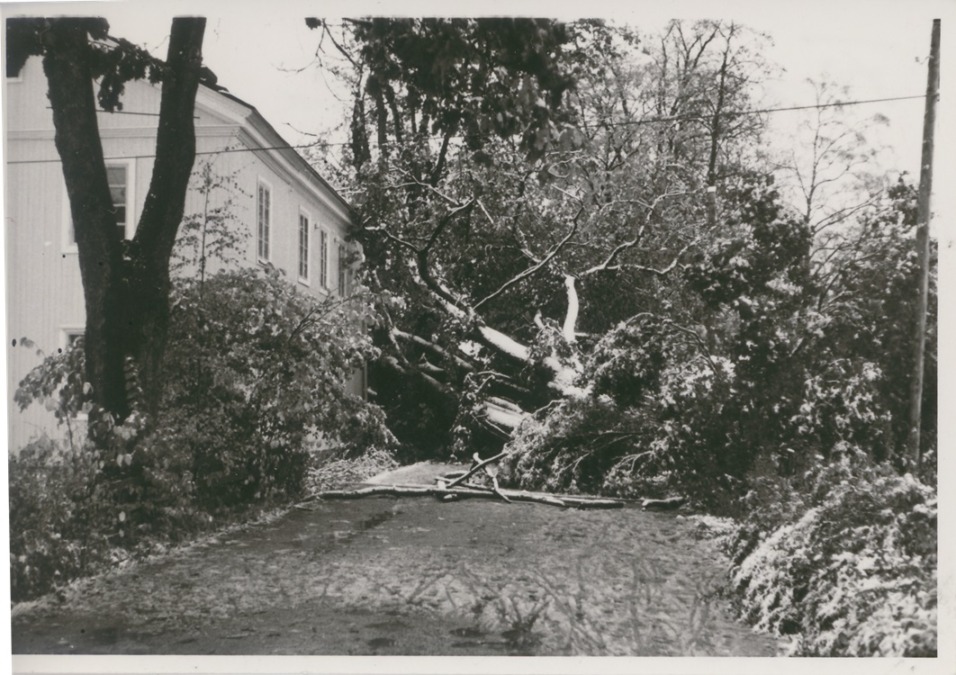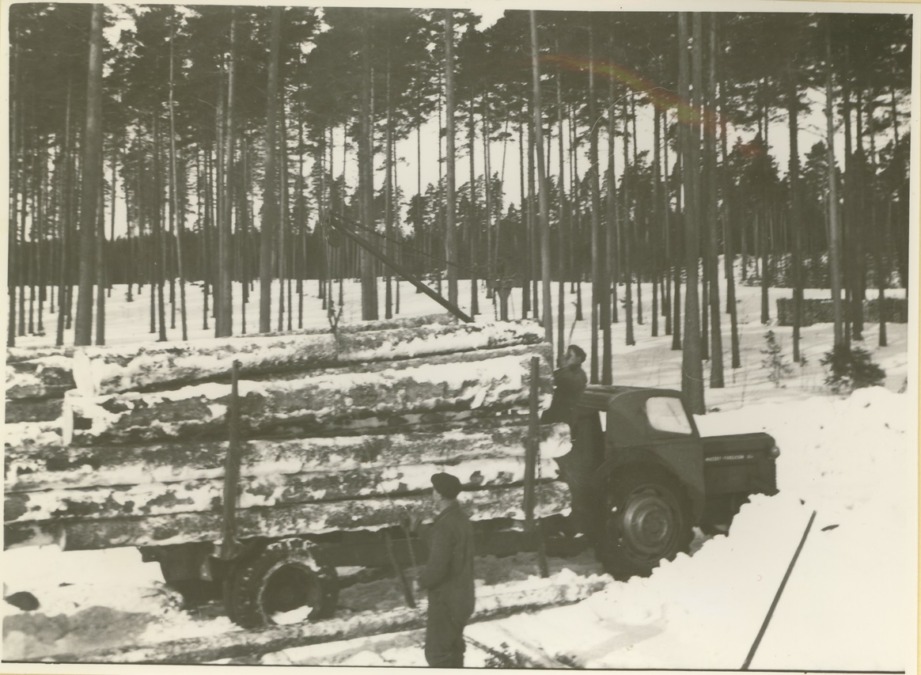Planted deciduous trees and special forest stands in Fiskars
In Fiskars, there are several trees or small forest stands that have been planted in memory of important events and people or with future needs in mind. The trees create significance for the residents of the ironworks due to their history, unique species and aesthetics, or function as excursion destinations, gathering places, or resting places. Current research also shows that healthy older trees and parks are actually good for our health, as they absorb pollutants, produce oxygen, reduce stress levels, and create well-being. It can also improve the microclimate of a place by providing protection from the sun, wind, and noise.
The planted deciduous trees, such as the elms and lime trees, give Fiskars a specific character and are admired by many. The elms in the village are said to have been planted by Johan Jacob von Julin to alleviate the homesickness of his English-born wife Emily Lindsay. Evidence that the elms were actually planted near her year of death in 1835 was obtained when the largest elm at “Kardusen” fell in a storm in 1955. According to the statement of forester Erik Roos, the elm was then 118 years old.

The largest elm of the ironworks, which fell due to Hurricane Berit on October 15, 1955, at the bridge towards the upper ironworks. It yielded 52 m3 of wood. Photo: Fiskars Museum Image Collection.
For a long time, the people of Fiskars had a habit of sitting and watching life go by at one of the elms on the main street. The place is called “the wait,” and it is depicted in Lennart Segerstråle’s monumental paintings in the house called “Samlingslokalen” or “Lukaali” in finnish. For Christmas prayers, however, people gathered, on office clerk Laura Holmström’s initiative, under a large spruce tree at the current market square.

Lennart Segerstråle’s monumental painting “Saturday Evening.” The scene in the middle depicts men and women waiting for the Saturday evening to begin at “väntan”, an old elm. Photo: Fiskars Museum Image Collection.
In 1934, oaks were planted near the Fiskars tennis court. For the ironwork’s 300th anniversary in 1949, a grove of nineteen oaks was planted near the current Paatero pottery workshop at the initiative of forest technician Nils-Erik Fritz. The trees were planted by the officials of the forestry department, so that everyone got their own tree. The oak furthest to the pottery workshop was planted by Fritz himself, and the tree furthest south probably by forester I.A. von Julin. On his 70th birthday in 2004, Göran J. Ehrnrooth was honored with oaks planted in concentric circles near Samlingslokalen / Lukaali.

A bare tree in front of the Fiskars tree nursery in 1935. Photo: Fiskars Museum Image Collection.
Other trees that have received attention from the locals are the old oak above the Stone House, which is as old as the village, and the dead oak near the tunnel on the road to Fiskars. Between Böle and Brunkom in the 1950s, there was an oak consisting of four trunks, which Fiskars Ab had declared protected. Back then it was Pojo’s only protected natural monument. Nowadays, there are protected spruce trees both on Antskogsvägen and Rahnolavägen.
In the 1840s, Johan Jacob von Julin planted larch trees in Lönnhammar, probably with future shipbuilding in mind. In 2019, Fiskars Oyj Abp decided to donate some of these larch trees to the masts for the museum ship Sigyn.

Logs being loaded at the so called larch park in 1962. Photo: Fiskars Museum Image Collection.
With reference to the symbolism, history, and practical significance of the trees, it is understood that tree felling often arouses emotions and discussions among the village’s residents. When should or can such trees be felled? Felling may be justified, for example, if the tree is damaged and poses a danger to people and buildings, or if it has been planted to serve a specific purpose in the future. The city of Raseborg nevertheless wants to encourage us to think twice before making the decision to fell trees in our yards and gardens. We should particularly cherish deciduous trees older than 200 years, large trees with a trunk thicker than one meter in diameter, and large hollow trees. Pruning an older tree is often enough to extend its lifespan. A healthy farm tree provides protection against sun and water damage and contributes to well- being, a good climate, and biodiversity. Last but not least: always plant a new tree when you have to fell an old one.
Sources and literature:
Guldet på vår gård. Det du inte visste om våra gårdsträd i Raseborg. Raseborgs stad. 2023
Luther, Hans. Vatten och växtvärlden. Pojo sockens historia del I. 1959.
Roiko-Jokela, Heikki (Red.). 1. Ihminen ja metsä – kohtaamisia arjen historiassa. 2012.
Roiko-Jokela, Heikki (Red.). 2. Ihminen ja metsä – kohtaamisia arjen historiassa. 2012.
Internet sources:
Museolaiva Sigyn saa uudet mastot Fiskars Oyj Abp:ltä. 26.2.2019. Fiskars Village. https://www.epressi.com/tiedotteet/matkailu/museolaiva-sigyn-saa-uudet-mastot-fiskars-oyj-abplta.html. From internet 10.8.2023.
Onko tässä Suomen kaunein puu. Retkipaikka. https://retkipaikka.fi/onko-tassa-suomen-kaunein-puu/. From internet 24.7.2023
Unpublished sources:
Mailkorrespondens med Fiskars skogsavdelning. 8.8-11.8.2023.